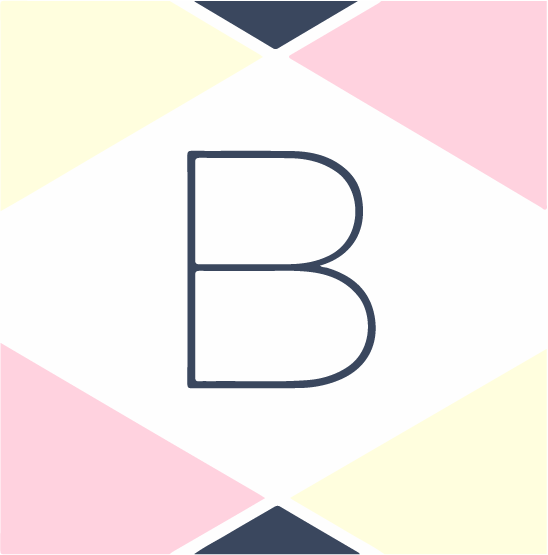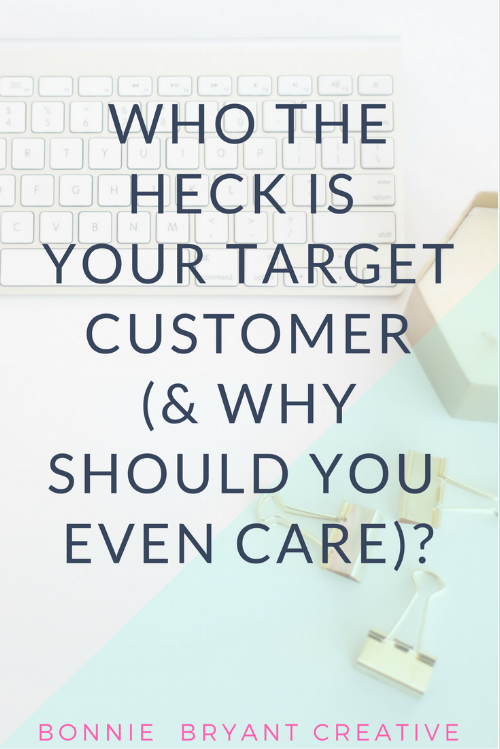Who the Heck is Your Target Customer (And Why Does It Even Matter)?
Today we're taking a deep dive into THE most important part of your marketing. Like, you cannot have a successful business without this. Grab your notebook, cue up your favorite Spotify playlist, and journey with us as we go into our Dr. Frankenstein lab and create your perfect dream customer (it's way less creepy than I just made it sound).
You've created your business. You've designed fantastic products or services.
You're putting a ton of time, effort, and money into marketing: Facebook and Instagram ads, blogging, the whole caboodle. But the phone isn't ringing. You can't connect with your customer. Sales aren't coming in, even though you know your product/service kicks ass. WHY?
OR
You keep getting crappy clients. People who like your stuff but incessantly ask for discounts. You get emails like, "Hi, is there any way you can offer a coupon for this?" Or, "Hi, I really like this, but can you do better on the price?" WHY?
Girl, I feel you. This sucks. The first step to a successful business, of course, is to create something people want - a good product or service.
But what if your product/service is flipping awesome, and the fish still aren't biting? It's because you're marketing to the WRONG people.
Who are you trying to sell to? This sounds like such an easy question, but it's actually one of the hardest (and most important) questions to answer when it comes to your business.
If you're marketing to people who aren't into your awesome product, or who can't afford your awesome product, or who don't understand your awesome product, you're marketing to the wrong people.
How do you start marketing to the RIGHT people? By narrowing down your Target Customer. And I'm gonna show you exactly how to do that. But first, some case studies!
CASE STUDY ONE:
I was meeting with a potential consulting client and my first question after learning about their products and services was, "WHO is your target customer?" They told me that they ONLY wanted very high-end customers of a certain age and income who could afford their services, and complained about past cheap clients who couldn't afford them. As my brain started to whir with ideas to reach these customers, the potential client switched it up on me. Not only did they want those super-wealthy high-end customers aged 40-60 - they didn't want to scare off potential customers with a lower budget. So they ALSO wanted to target young people who had much, much less money to spend.
HOLD UP. You can't have two Target Customers who are the complete opposite of each other. I advised this potential client to focus ALL of their marketing effort into reaching their actual Target Customer: wealthy 50-year-old women who already love the potential client's aesthetic. Don't waste time casting a huge net to also maybe catch a 25-year-old with a tiny budget, who isn't into the potential client's aesthetic anyway. It's better to tighten your niche to a really good one than to cast a huge net hoping that you'll maybe also catch someone who isn't interested in you in the first place. Like Ron Swanson says, it's better to whole-ass one thing than half-ass two things.
CASE STUDY TWO:
I was talking to a person who was struggling with her sales. She made hand-lettered inspirational quotes and was having trouble selling them. I asked who her target customer was. She said that her target customer was anyone with a wall, because she felt that everyone could benefit from her inspirational quotes.
HOLD UP. Your Target Customer cannot be "anyone/everyone." You might love your craft and think that it could be beneficial to a lot of people, but as a business owner, you can't expect EVERYONE to want your product, and waste resources trying to market to EVERY PERSON ON THE DAMN PLANET.
I asked her more about her target customer: age? location? gender? I gave recommendations after looking at her product: I thought that women aged 25-45 who were moms and who were religious would be a good place to start. She was adamant that she did not want to narrow down her market: she truly believed that anyone with a wall would benefit from her product, and she felt that marketing to a specific person would be selling out. I told her in the kindest, gentlest way possible that maybe it would be best for now to shift her business to a side hustle.
Without a target market, you CAN. NOT. effectively sell your product.
So how do you narrow down your niche? It seems super hard, but I'm going to walk you through it. We're going to make your Target Customer into a single person. We're gonna NAME him/her. You're gonna finish this blog post ready to sell exactly to the person you should be selling to.
Let's go into our little Dr. Frankenstein lab and think about WHO this person is. Beep-bop-boop goes the Target Customer creation machine!
We need to find out WHO this person is and what she's all about. (I say "she" because MY target customer is cool AF female creative business owners. Shout out if that describes you!)
We're literally going to create an actual target customer. We're going to name her. ALL of your marketing effort and money is going to go towards enticing THAT person (who of course, is an avatar of a larger group of similar people who would be interested in your product or service).
When you pick a photo for Instagram and write a caption, think, "Would my target customer like this?" When you create a new product or service, you need to think, "Will my target customer WANT to buy this?" When you design an ad or an e-blast, think, "Will my target customer click on this?" It's ALL ABOUT your target customer, guys. They're the one who's buying your stuff!
OK, so the first step is to download your Target Customer Worksheet FO' FREE here.
Now, picture everyone in the entire world. Got it? Now with each step in our Target Customer worksheet, you're going to narrow down all those people, and end up with the perfect avatar for the group of people who are going to buy your stuff.
We start with the basics, and I'm going to invent a business so you can play along with me. Our pretend business is going to be a wedding planning company that specializes in high-end bohemian weddings - think flower crowns, organic/vegan menu options, ceremonies in a redwood forest, wildflower bouquets, the whole deal. Let's go through the Target Customer worksheet pretending we own this wedding planning company.
What's our target customer's gender? Let's say a female, because it's usually the bride that takes charge of most of the wedding planning.
What's her age? We want high-end brides who can afford our services, right? So they're likely to not be 22 years old, wanting a fist-pumping catering hall party animal wedding, right? For our target customer, let's say 30, with a note that 27-37 is a good age range to target.
What does her home look like? A two-bedroom apartment in Brooklyn with pine floors, exposed brick, and a succulent garden.
Relationship Status? Engaged, duh.
And on we go in our worksheet. Income level is super important - for this example, I would say she has a salary of $100,000+, with a household income double that (remember, you want a target customer who can afford you!) Fill out the sheet, thinking about her hobbies (this target customer would be super into the outdoors and her community garden), goals, and where she spends her time.
The most important thing is at the end - her pain points. For this example, it would be that she wants a chill wedding planner who's going to plan a chic bohemian-style wedding. She's afraid of having to do all the details herself, and doesn't want any cheesy "traditional" wedding elements (no garter toss, please).
Once you go through this worksheet and really start thinking about the little details of your target customer, your marketing tasks will be SO much easier. She lives in Park Slope and shops at Terrain? Target your ads to women age 27-37 who are engaged, within 5 miles of Park Slope, and follow the Terrain Instagram. BOOM. Isn't that easier than spending hundreds of dollars on guessing games?
Get your worksheet HERE and if you have any questions, send me an email!



